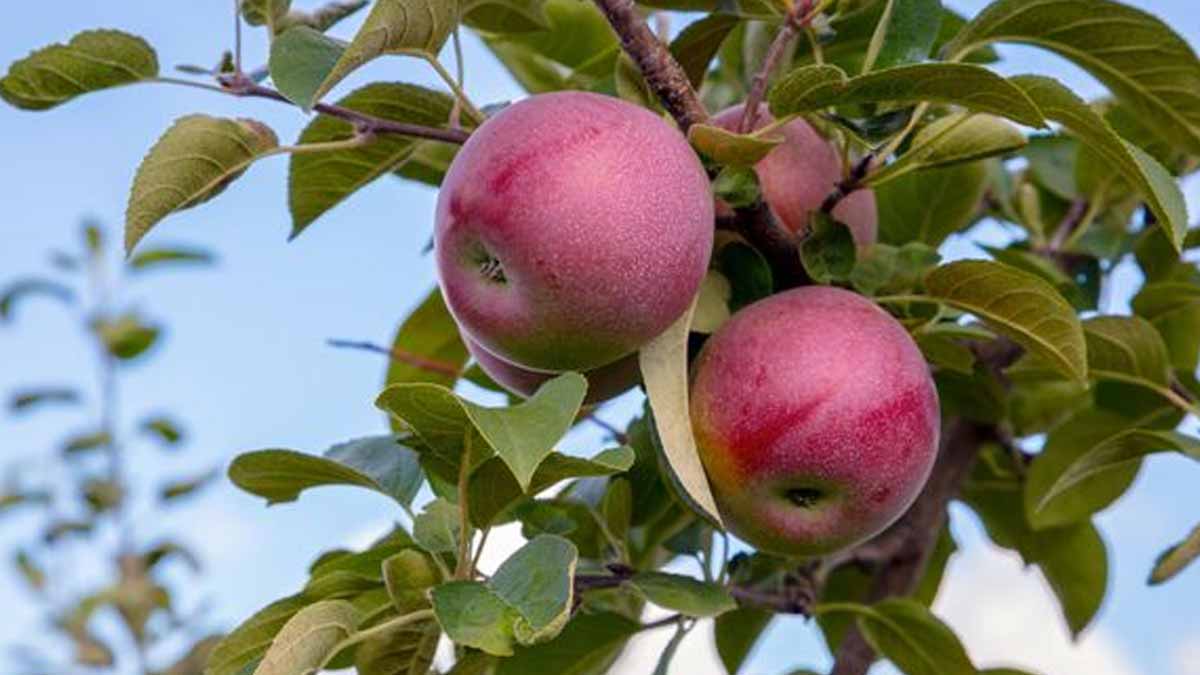September loads branches with promise. Pears, plums, and damsons glow, yet apples call for steady hands and smart timing. For baking pies, cakes, sauces, muffins, and crumbles that carry you through cold weeks, habits matter more than haste. Simple tools, gentle moves, and calm checks keep fruit sound. With a soft bag, a safe ladder, and patience, apple trees reward a weekly routine. Handle ripeness with care, then store well, and the season stretches deep into winter.
Why weekly picking protects fruit and branches
A weekly “pick over” keeps weight off limbs and prevents sudden windfalls that bruise good fruit. Monty Don says to check trees at least once a week in September, because timing changes fast near harvest. Regular passes spread the workload and reduce damage, so flavor stays high while waste stays low.
Carry a large soft bag or a bucket with a smooth rim. Cushioning matters, since hard edges mark the skin. A sturdy ladder helps you reach safely. Climb slowly, with three contact points, and work across each branch. Lighten clusters as you go, so nearby fruit grows evenly, without pressure points.
Monty Don shared this guidance on September 21, 2025, then it was updated on September 22 at 07:13. He often pairs such seasonal reminders with tips on bulb planting, taking cuttings, and aerating lawns. Good habits stack. Tending fruit now protects flavor later, while the rest of the garden quietly benefits from steadier, safer routines.
How apple trees signal ripeness with a simple lift
Ripe apples release with almost no effort. Do not force anything. Cup the fruit in your palm, then lift gently. If the stalk loosens cleanly, it is ready. If it resists, leave it. This calm test protects spurs, preserves next year’s growth, and keeps today’s harvest pristine and unbruised.
Color tells more than shine. Two-toned fruit shows a creamy yellow “background” on the shaded side when maturity approaches. Solid green kinds, like Granny Smith, can mislead; cut one. Seeds reveal truth. When seeds look tan or pale, the fruit likely needs more time. Wait a few days, then check again.
Taste can confirm, yet visible cues save time. Work a branch from the outside in, spacing picks so light reaches what remains. In mature apple trees, these cues line up fast, especially after cool nights. Lift first, look second, taste last. The order reduces waste, protects bark, and keeps your rhythm steady.
Picking techniques that avoid bruises and wasted effort
Support the branch with your free hand while you lift the fruit. This limits stress on spurs and keeps the twist-and-yank habit away. Place each apple, don’t drop it. A padded bag or lined bucket spreads pressure, so skins stay intact and small knocks don’t bloom into spoilage later.
Move slowly, then move on. A weekly round is enough. Remove damaged or insect-stung fruit promptly and keep windfalls separate from sound picks. Clean breaks matter because one bad apple does spread trouble. Space your haul in a single layer when you pause. Heat builds in piles, and quality fades quickly.
Keep ladder steps dry and level. Overreaching causes slips and shattered fruit. Instead, reposition often, even if it feels slow. Eye level is best for the lift test. If you can’t see the stalk clearly, you’re guessing. Good harvests come from short moves, clean motions, and a calm pace.
Store a harvest from apple trees for months without fuss
Storage sets the tone for winter. Place sound fruit carefully in a cool, dark, fairly moist spot. A cellar, shaded garage, or insulated pantry works if airflow stays gentle. Avoid heat vents and direct light. Use slatted crates or shallow trays. Label varieties and dates, then rotate stock as needed.
Bruised apples and windfalls will not keep, Monty Don notes, so eat them fresh or cook and then freeze. Turn softies into sauce, compote, or pie filling in small batches. Freeze flat, stack later, and mark containers. According to his advice, clear sorting now prevents big losses after just a week.
Too much fruit? Hire an apple press. Make juice, then bottle it for the shelf or the fridge, depending on method. From apple trees, surplus becomes something bright you can pour. Pressing transforms urgency into calm. With jars lined up and labeled, you turn a glut into steady winter comfort.
Wrap, check, and get creative with windfalls
Wrapping each apple in newspaper or tissue stops fruits touching and slows rot. One layer per crate improves airflow while paper absorbs moisture swings. Space matters because bruises travel. Mark rows, keep pathways clear, and slide trays gently. Scheduled checks make storage a quiet routine rather than a rescue mission.
Inspect often and pull anything suspect right away. Small blemishes grow fast in the dark. Keep wrapped fruit together, and keep windfalls elsewhere. Clean bins between batches. Lightly wipe dust, then dry. Reduce hiding spots for spores, and you reduce surprises. A careful system buys weeks, sometimes months, of peak flavor.
A dehydrator turns windfalls into chewy slices that last. Core, slice evenly, and dry until pliable. Store in jars with tight lids, then tuck them near breakfast fixings. Windfalls from apple trees love this second life. Snacks stay simple, while your freezer holds room for sauces, crumbles, and pies.
A steady weekly routine turns autumn fruit into winter comfort
September rewards patience. Pick over branches once a week, lift rather than twist, and accept that ready fruit almost falls into your hand. Sort carefully, store in a cool, dark, fairly moist place, and separate windfalls. Press the surplus, dry the rest, and apple trees will feed your table for months.
